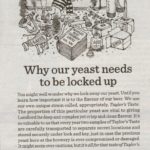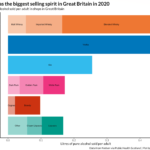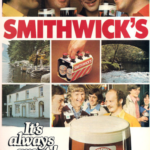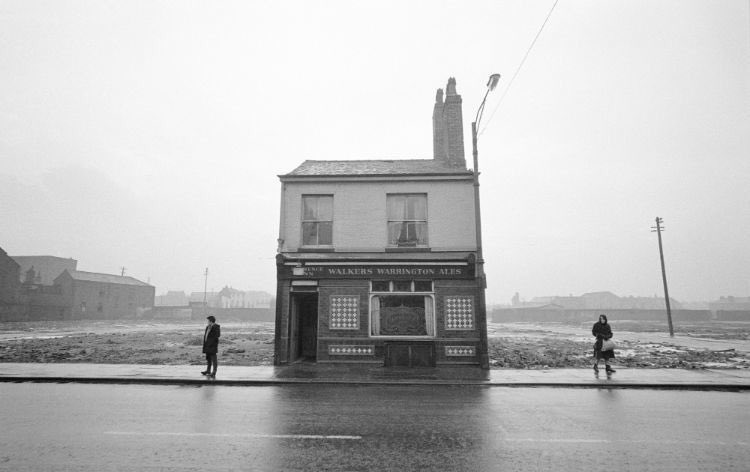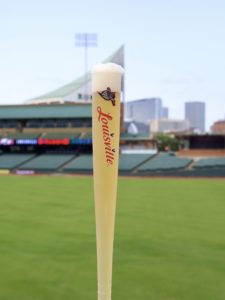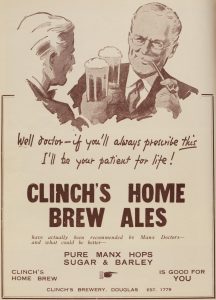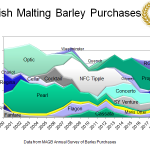 OK, the lawn has been mowed. Even though we had frosts three times in the last week. That is a milestone. As is the Craft Brewers Conference for 2022. I like the logo. No reference to #CBC2022. Actually looks like it was used by the Minnesota Beer Distributors’ Convention back in 1974. Right down to the bottle rather than, you know, a can. So… some people are getting back together. To get a bag or two of fruit sauce. Even we were out last night at a favourite place and hardly anyone had a mask on. Yikes. Our local numbers have moved from worst ever to less than worst ever so people must have forgotten or given up. Fingers crossed! That’s where we are. Fingers being crossed.
OK, the lawn has been mowed. Even though we had frosts three times in the last week. That is a milestone. As is the Craft Brewers Conference for 2022. I like the logo. No reference to #CBC2022. Actually looks like it was used by the Minnesota Beer Distributors’ Convention back in 1974. Right down to the bottle rather than, you know, a can. So… some people are getting back together. To get a bag or two of fruit sauce. Even we were out last night at a favourite place and hardly anyone had a mask on. Yikes. Our local numbers have moved from worst ever to less than worst ever so people must have forgotten or given up. Fingers crossed! That’s where we are. Fingers being crossed.
The big news is in beer periodicals… as it is periodically. Is there a comeback being made with the news that All About Beer has been revived to some extent by Beer Edge collaborators Andy Crouch and John Hall:
When we founded Beer Edge in 2019, we drew on our experiences with All About Beer and the role it had in developing our own education and careers to help define the vision for our new company. Meanwhile, All About Beer’s bankruptcy concluded and the company and magazine closed for good. Bradford and Johnson later regained control of the brand itself and the content archive. And in early 2022, they agreed to sell these individual assets to us.
I will be interested in hearing about the business model. Andy, a public service lawyer in the real world, is acting as publisher with John reviving his role as editor, a position last held in 2017. After learning that GBH is essentially subsidized by non-publication public and private revenues (and subject to the inexplicable* withdrawal of cash, too) I thought a bit about the other ways of making an entirely niche topic at least break even. Pellicle, for example, on its third anniversary has announced a sustainability goal based on subscribing patrons with a noble goal: “your subscription lets you ensure that people who can’t afford it can still access our features, free of charge“. I am among the subscribers as Pellicle often offers writing you don’t see anywhere else. The main remaining old school periodical is Craft Beer & Brewing run these days by Joe Stange appears to be run as a for profit business with generous old school subscription rates with various tiers no doubt providing quite a range of valuable benefits. I don’t subscribe as I find the articles, however excellent, to be often aimed towards the supply side, rather than me and my consumer demands. What is the proposition now from All About Beer?
The other big news in the brewing world in 2022 is really the resurgence of big beer. Or rather BIG BEER. As illustrated this week by the fabulous news from Molson Coors:
Molson Coors Beverage Co. says its profits soared in the first quarter for its largest quarterly sales growth in more than a decade. The Colorado and Montreal-based company, which reports in U.S. dollars, says it earned US$151.5 million or 70 cents per diluted share, up from US$84.1 million or 39 cents per share a year earlier. Underlying net income excluding one-time items was US$63.8 million or 29 cents per share, compared with US$1.6 million or one cent per share in the first quarter of fiscal 2021. Revenues for the three months ended March 31 were US$2.2 billion, up nearly 17 per cent from US$1.9 billion, primarily as a result of strong growth outside of North America amid fewer on-premise restrictions in Europe.
So much for the end times that all the experts spoke of. Like seltzers taking over. We do, however, still seem to have a slight bitterness in the mouth.  Speaking of macro-lag, The Tand shared an image of what I think is a very attractive beer label, Cerveza Victoria lager from Malaga Spain. Utterly unhip with its middle aged guy in a suit wiping the sweat off his bald head, the use of white in his shirt, the hankie, the table and the background sends the image of pounding heat. I like the straw hat, too. Lovely design.
Speaking of macro-lag, The Tand shared an image of what I think is a very attractive beer label, Cerveza Victoria lager from Malaga Spain. Utterly unhip with its middle aged guy in a suit wiping the sweat off his bald head, the use of white in his shirt, the hankie, the table and the background sends the image of pounding heat. I like the straw hat, too. Lovely design.
Less wonderful are the stories David Jesudason shared of his disheartening discriminatory experiences in the bigoted wine world for Glug:
One of the worst racist nicknames I endured was repeatedly said when I worked at a bar during my university days from 1999 to 2003. It was my job to carry the bottles of wine from the cellar and the manager of this West London establishment – Keith – would reward my efforts by calling me Gunga Din. For those not familiar with the Rudyard Kipling poem (and I’ve got a feeling that my racial abuser only knew the title) it’s about an Indian water carrier so expendable that after being killed helping the British Army his life is summed up by the jokey line: ‘You’re a better man than I am, Gunga Din.’ Although it’s a highly offensive term, it’s actually fitting as I was as dispensable as Kipling’s Hindu hero and if I’d complained I would’ve been ushered out of the door.
Just to be clear, the need for the efforts of Crafted for All and Beer Diversity at #CBC2022 give me no greater hope for the experience in the beer world.
Also at #CBC2022, rolling out craft’s long stale mantras of “we” and “winning” and “wars” is so utterly bizarre. And to my mind, the group think enforced at these gatherings has led to things like hazy IPAs being effectively gateway drinks for seltzers. Dumbing down leading to loyalty leachate. And shit like this:
… beers brewed with marshmallows. This once niche ingredient has actually become a trendy adjunct, but will it stick? …the marshmallow beer trend is like a Peep in the microwave: it is on the rise! Just last year, the number of beers containing marshmallows available through Tavour increased 31% over the year prior… these brewers started using mallows in small doses in select Stouts… fans of the brewery loved it and continue to love it. Tavour recently featured one such Drekker, a dessert-inspired smoothie Sour –– Chonk Mango & Marshmallow. It sold out in less than 48 hours.
I feel dirty just mentioning that. Sharing another sort of thing I don’t want to experience, Ed told a tale of mixing beer and rock climbing this week as he retro-ticked:
On the last night of our trip as the pints went down we were planning what to do in the morning before we went home. We were tempted by the fizzy keg climb Double Diamond (HVS 5b) on the impressive Flying Buttress. I was also tempted to pour more beer down my neck, it was the last night after all. When it started raining heavily I agreed to lead the climb before heading back to the bar, confident it would be far too wet to climb in the the next day. So when I was greeting with blazing sunshine when in my hungover state I peered out of me tent in the morning I was not filled with joy.
By contrast, Jordan has done the far more sensible thing and taken up writing about beer more often. I say this with the greatest of pleasure as for a certain set it can seem that one of the qualifications for being a beer writer, when not hiding in podcast oblivion,** is not actually writing all that much about beer. Not Jordan! His immediate focus? Actually reviewing beers that show up in the mail and being a bit honest about the process:
I didn’t read the label. Although I try to do right by everyone, sometimes, there’s so many samples that I’m profligate. Sometimes I’ll try things and they aren’t worth mentioning; I’d just hurt the sales. Sometimes, I’ll really enjoy something but I won’t find a place for it. With Hoppy Pollinator, I just didn’t want you to know about it on the off chance you’d prevent me getting more of it next year.
I liked this article by Will Hawkes about the current trend of Dark Mild in England’s Black Country, a theme I’ve seen nosed around periodically over the years. Twenty years ago and more, Sarah Hughes Dark Ruby Mild was a but of a lantern in the dark to the home brewing set. I say I liked it but more so after I did a bit of text analysis on the 3,800 piece to establish what I was reading given, you know, it was filed under the word “critical“… something of an unlikelihood. I thought to do this primarily as the article makes no mention of the sorts of background to Mild that one would find in, say, a piece by Ron Pattinson… like his 2011 bit in the BeerAdvocate “A Short History of Mild.” So… 42% of the article is made up of quotes from folk in the trade. Three historical records are cited and the rest is mainly pleasant physical observations or input from or about four breweries making these Dark Milds: Yates, Bathams, Fixed Wheel and Box Car. What do we call this sort of writing? If it was in the newspaper, a lifestyle piece on a regional scene?
Matt mentions another aspect of reality:
News of another brewery closure. They are dropping like flies at the moment. My thoughts with all the affected staff.
That was raised in relation to Exe Valley Brewery shutting down. In operation since 1984, the current owners only held the reins since 2020. They join another brewery well into its fourth decade, Wood’s Brewery in Shropshire, along with many others. Normal churn or end times? Hard to know but hard times for the owners and staff.
On the up beat, Beth Demmon continues her series of profiles at Prohibitchin’, her blog receivable by email, with this week’s article on Lauren Hughes, head brewer at Pittsburgh’s Necromancer Brewing and how they are seeking to make change:
Strategic hires at Necromancer Brewing, ensuring long-term support of said hires through consistent mentorship, and plenty of community-facing events that signal safety and support for marginalized people. “Having people enjoy beer in a place where they feel welcome and being able to give back to the community so much, that means a lot to me,” says Lauren.
Finally, I am not sure I would call a beer experience “Schubert-like in its symphonic harmony” given he completed only six of his thirteen symphonies and one of those is named Tragic.
There. For more, check out the updates from Boak and Bailey mostly every Saturday and from Stan every Monday except last Monday and next Monday, plus more with the weekly Beer Ladies Podcast, and at the weekly OCBG Podcast on Tuesday and sometimes on a Friday posts at The Fizz as well. There is a monthly sort of round up at The Glass. (Ed.: that seems to be dead now.) There is more from DaftAboutCraft‘s podcast, too. And the Beervana podcast. And sign up for Katie’s irregular newsletter, The Gulp, too. And check out the Atlantic Canada Beer Blog‘s weekly roundup. Plus follow the venerable Full Pint podcast. And Fermentation Radio with Emma Inch. The AfroBeerChick podcast as well! And also look at Brewsround and Cabin Fever. And Ben has his own podcast, Beer and Badword (Ed.: …notice of revival of which has been given…) And remember BeerEdge, too, and The Moon Under Water.
*Actually, quite explicable.
**Let’s be honest. They take up too much footprint in your audience’s available time, you can’t cite an idea within them for a quote, the attract no comments of consequence and they contain no means to link to something they reference. You may as well as be sending postcards to the handful of folk who listen. And writing “umm” for every seventh word.

